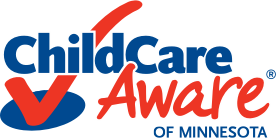Articles Address Low Wages in Early Education and Introduce a New Wage Scale

The Minnesota Department of Employment and Economic Development has now published two in-depth articles documenting both the very low wages in the early childhood profession, particularly in family child care, and analyzing a proposed equitable wage scale for the field, developed by the Transforming Minnesota’s Early Childhood Workforce project. Child Care Aware of Minnesota participates in that project. Most recently, we were part of a subcommittee called “Moving the Needle on Compensation” that developed recommendations to improve compensation in Minnesota.
As the first article in the series, “Early Care and Education: Profile of an Industry in Crisis” says,
“The early care and education (ECE) workforce, including owners of family child care programs as well as Head Start, child care center and preschool teachers outside of the public school system, have median wages below any other occupation requiring the same level of education in Minnesota, and well below the cost of living. Wages are so low that these occupations are not encouraged choices for workforce training in Minnesota based on U.S. Department of Labor guidance.”
The article goes on to note that this causes recruitment and retention challenges that make it impossible for many programs to meet the staffing requirements required by licensing regulations. Furthermore, wage equity in early childhood education will enhance racial and ethnic equity in Minnesota, since the early childhood workforce is more diverse than many other Minnesota industries. Overall, Black, Indigenous, and People of Color (BIPOC) workers comprise 23% of the early childhood workforce compared to only 15% of the workforce across all Minnesota industries.
The second article, “Minnesota Early Childhood Education Wage Scale,” provides an analysis of an equitable wage scale for the early childhood workforce that addresses issues of recruitment and retention and incentivizes human capital development. As the article states,
“Implementation of this wage scale is predicated on increased funding for the industry. In the absence of additional resources, it is unlikely that the industry would be able to implement this wage scale without putting programs out of business and pricing most families out of the market.”
The article concludes by noting that implementation of this wage scale would help build a pipeline for the early education workforce by increasing credentials and addressing recruitment and retention issues.
